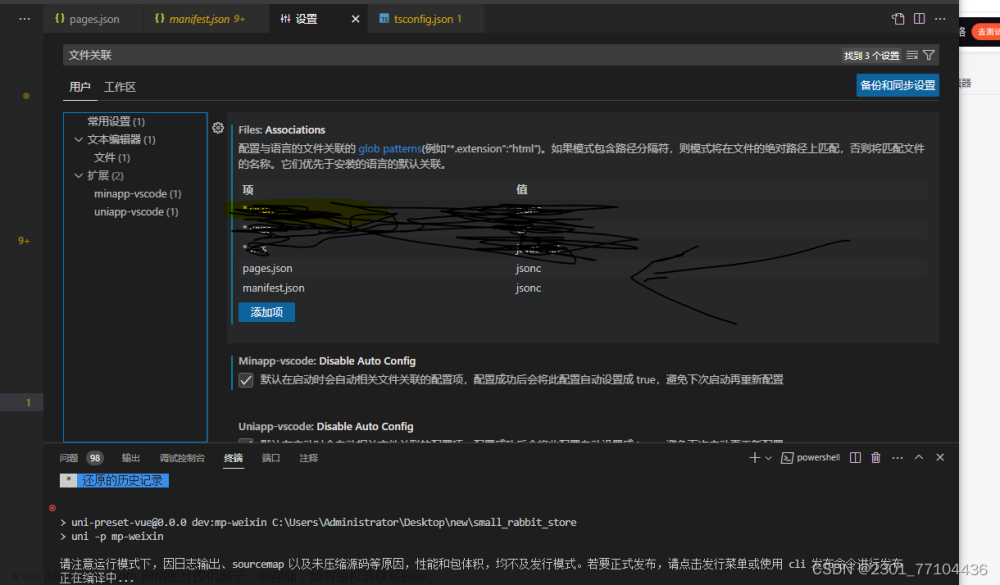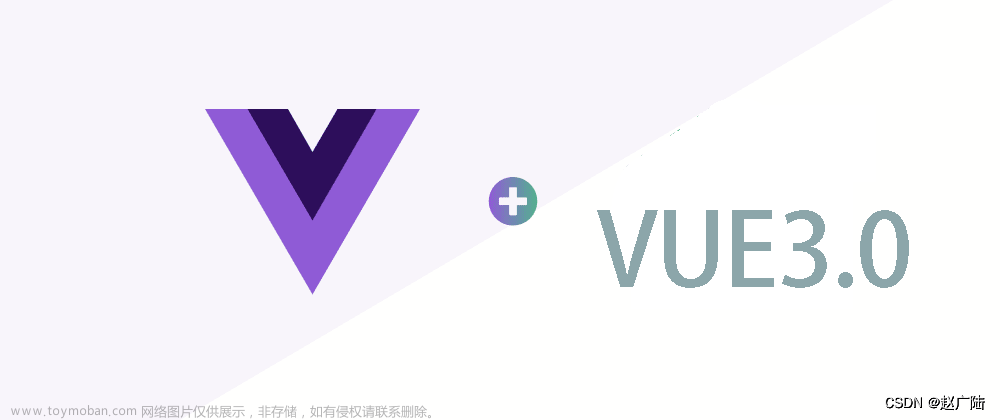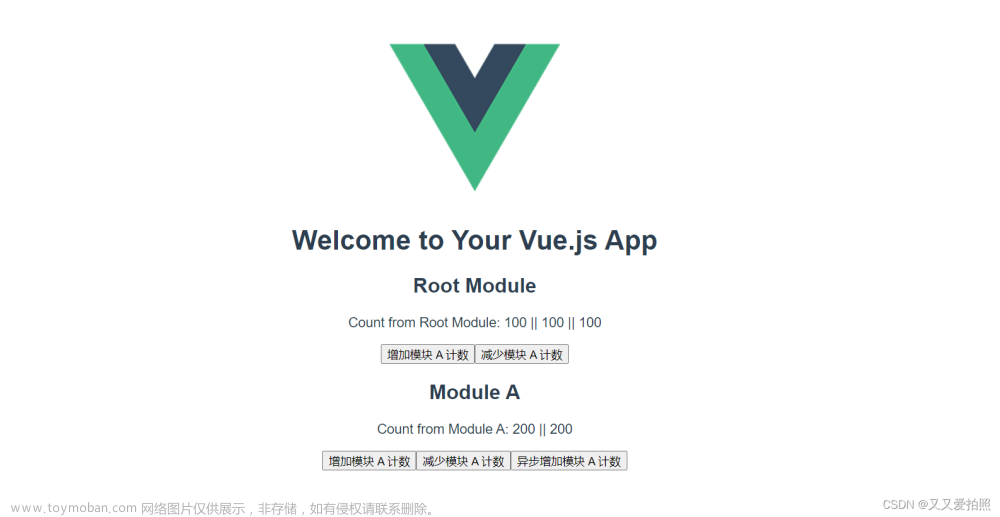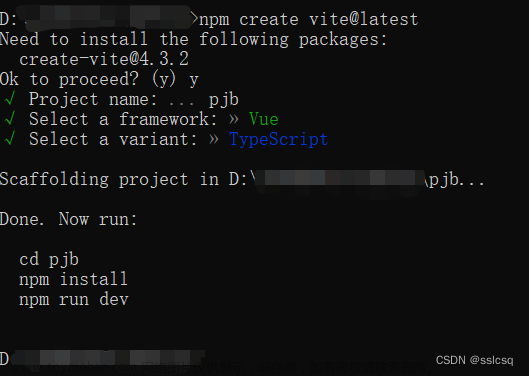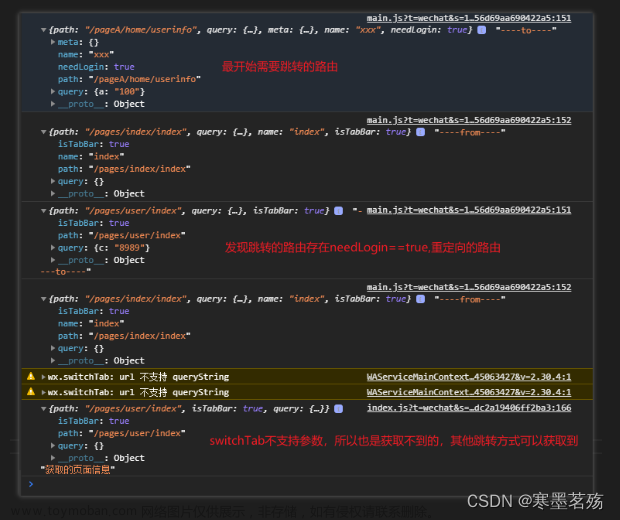1安装pinia
如果新建项目,先初始化一下
npm init -ynpm install pinia --save2 新建pinia store目录,并创建相关文件
名字自己定我的是pinia-store,在目录下新建index.js和login.js,代码如下
index.js 这是需要被main.js引用的 如同与vue3项目中index.ts中引入的pinia
import { createPinia } from 'pinia'
const store = createPinia()
export default store再建一个存储状态的文件(login.js)
export const useloginStore = defineStore({
id: 'login', // id必填,且需要唯一
state: () => {
return {
userName: uni.getStorageSync('userName') ? uni.getStorageSync('userName') : '未登录'
}
},
// actions 用来修改 state
actions: {
login(userName) {
uni.setStorageSync('userName', userName)
this.userName = userName
},
logout() {
uni.clearStorage()
this.userName = '已退出登录'
}
}
})
4 main.js中的修改文章来源:https://www.toymoban.com/news/detail-505594.html
import App from './App'
// #ifndef VUE3
import Vue from 'vue'
Vue.config.productionTip = false
App.mpType = 'app'
const app = new Vue({
...App,
})
app.$mount()
// #endif
// #ifdef VUE3
import {
createSSRApp
} from 'vue'
// pinia
import pstore from './pinia-store'
export function createApp() {
const app = createSSRApp(App)
app.use(pstore)
app.use(store)
return {
app
}
}
// #endif
在vue组件中就可以操作pinia中存储的状态的和一系列操作了文章来源地址https://www.toymoban.com/news/detail-505594.html
<template>
<view>
<view>
<button type="primary" @click="login('刘大根')">登录</button>
<button type="default" @click="logout">退出</button>
</view>
<!-- <view>{{userName}}</view> -->
<view>{{loginStore.userName}}</view>
</view>
</template>
<script>
引入存储pinia状态的文件
import { useloginStore } from '@/pinia-store/login'
const loginStore = useloginStore()
export default {
data() {
return {
loginStore:loginStore
}
},
computed: {
// ...mapState(['userName'])
},
methods: {
// ...mapActions(['login','logout'])
login(userName){
loginStore.login(userName)
},
logout(){
loginStore.logout()
}
}
}
</script>
到了这里,关于uniapp中使用pinia (针对于uniapp创建vue3项目,uniapp创建vue2项目此方法不可用)的文章就介绍完了。如果您还想了解更多内容,请在右上角搜索TOY模板网以前的文章或继续浏览下面的相关文章,希望大家以后多多支持TOY模板网!


